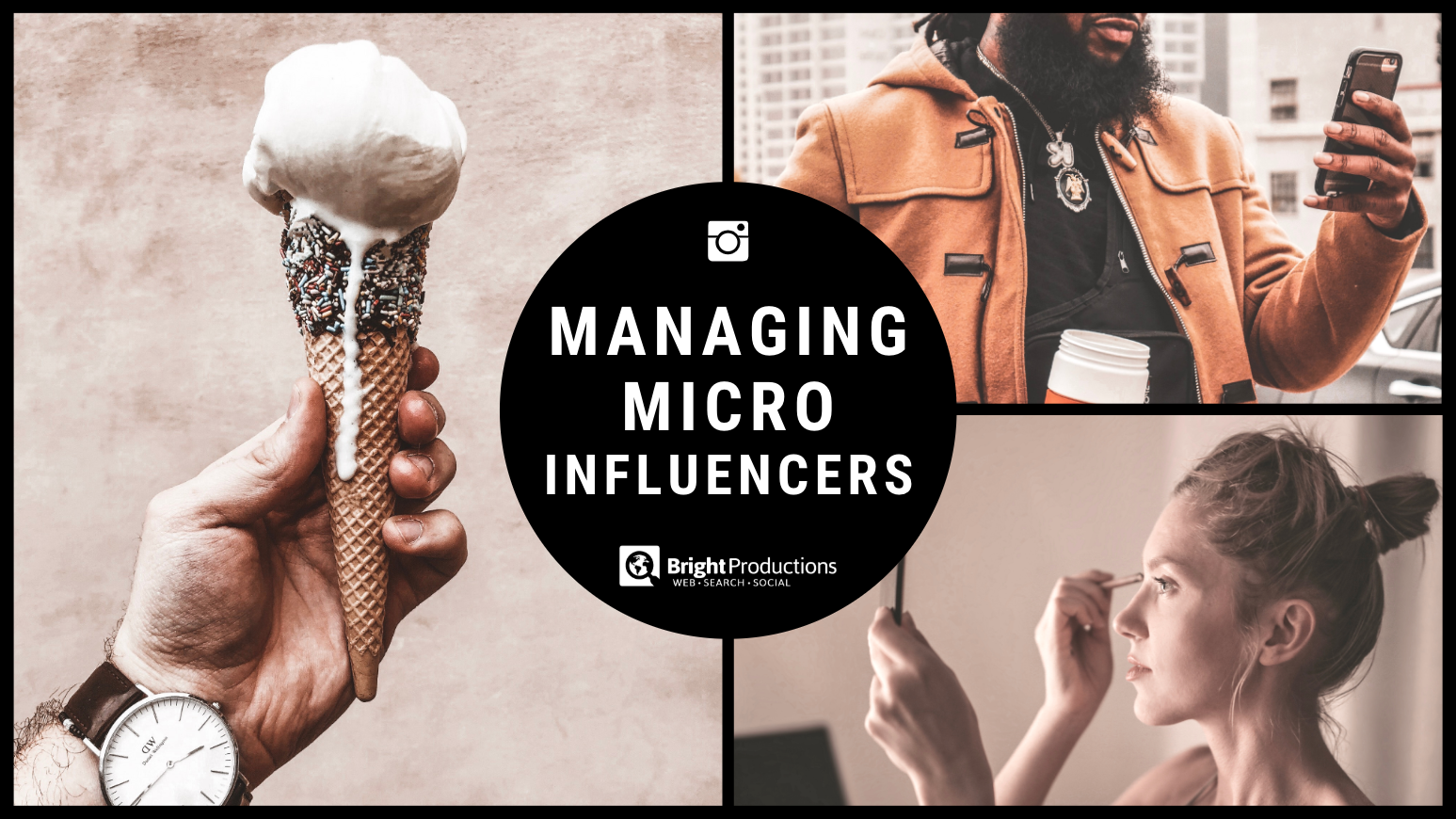
How To Manage Your Own Micro-Influencers
By now, you’ve probably seen and heard that influencer marketing is a tool many brands turn to for exposure, brand awareness and leads. Influencer marketing is so popular that agencies whose only purpose is to manage these social media influencers can be found all over the world.
If you’re considering using influencers to market your brand, consider the following:
1. Are microinfluencers or celebrity-status influencers best for your brand? Things like industry and budget will affect these decisions. The marketing team at BP tends to lean towards recommending microinfluencers due to the fact that they often have very targeted audiences and aren’t so “popular” that they don’t bother to engage with their fans.
2. Are you going to hire an agency or contact influencers individually and hire them as contractors? If you plan to spend a large amount of your marketing budget on several influencers, it might be best to hire an agency to do the heavy lifting. However, if your budget is smaller and you want to have direct contact with the influencers you hire, it’s quite easy to manage on your own if you have the right tools.
3. Do you have time to manage an influencer campaign? Most business owners’ answers will be “no.” Chances are you are wearing many hats and the idea of social media alone overwhelms you, let alone managing social media stars. Don’t worry we’re here to help.
Before learning how to manage your influencers, you should understand the difference between a celebrity influencer and micro influencer.
Working with Celebrities:
A celebrity is someone who has grown a major following through social media, traditional media, sports, beauty or entertainment. Millions of fans equal millions of followers…but little engagement. Their incredible reach can be great for creating buzz for your product or service, but what about building actual trust and purchase intent? Studies find that a mere 2.8 percent of consumers were more likely to a product in-store if it were endorsed by a celebrity, compared to 30 percent of consumers when endorsed by a non-celebrity influencer.
– You often don’t own the content to use at your leisureMore complicated contracts to execute
– They rarely respond to fans that ask questions about what they are promoting
Working with Influencers:
Everyday people who create content that resonates with a specific audience. They built their following and their level of influence on a certain platform (blog, Instagram. Youtube, etc.) by choosing a niche they’re passionate about (food, decor, lifestyles, electronics, etc.) and sharing their thoughts. Influencers with smaller audiences tend to have closer relationships with their followers because they can more easily reply to their comments and questions.
In a study of 9,000+ influencer community, they found that once an influencer surpassed 100,000 followers, their engagment drops significantly. Influencers with under 100,000 followers, aka ‘micro-influencers’, command dedicated audiences and killer content opportunities for a fraction of the price of a celebrity.
Managing Influencers In-House:
Bright Productions began working with microinfluencers on behalf of our clients a few years ago. We admit being a little late in the game, but we wanted to be sure this wasn’t a fading trend before investing into it. Turns out, it was pretty simple, and fun! We’ve broken down the process into steps to make it simple for you too:
1. Find the right influencers and create a spreadsheet. Chances are you may have had some followers who have tagged you in content they created. If they have a decent following, throw them on the list. Fans of the brand are always the best place to start. Next, broaden your research to accounts that are within your industry and utilize the hashtag search function to find them. This is where you will keep track of your influencers throughout the process. What do they charge, what are they promising, have you paid them, when their content is due etc. Your spreadsheet may have columns that look like this:
2. Write a generic influencer agreement so that each person you work with clearly understands what you’re looking for, how and when you send payment, what to do should something go wrong etc.. Make sure they sign/e-sign and save in your records.
3. Pay 50% up front and 50% after agreed upon content has been delivered. Most professional influencers will be fine with this. You don’t want to go chasing after the content you paid for.
4. Track results so that you know who worked well for your brand and who didn’t. This will help you create a team of influencers that you can turn to whenever your brand needs fresh content.
Fake Influencers
Our final warning when hiring microinfluencers is to be careful of the fakers.
– A microinfluencer might be a fake if:
– They have thousands of followers but don’t get very many ikes or comments on their posts.
– They are following thousands of people. Influencers usually follow about 1 to 5 perfect of their following. Much more than that may mean they are using a paid growth tactic.
– They don’t have any “paid partnership” titles above their branded content.
– They don’t respond in their comments section in a rich and diverse way.
– They only have a high number of followers in one platform.
– Check their geographic location. A lot of purcahses followers are from thrid world countries.
If you have any questions about microinfluencers, or are a microinfluencer yourself looking for a partnership, reach out to us!